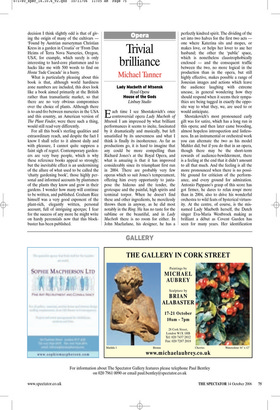Perennial guide
Ursula Buchan
For a number of years now, hardy perennials have outsold and outshone trees and shrubs in British garden centres and nurseries. Their relatively small size and cost, the fact that there is no delay in their flowering after planting, and the ease and speed with which they grow into the space allocated to them mean that they now have larger, slower-to-mature plants kicked out of sight. Moreover, a whole new approach to border design has developed in the past 15 years — the New Naturalism — which depends almost entirely on hardy herbaceous perennials. Visit Pensthorpe in Norfolk, Scampston Hall in Yorkshire or Lady Farm in Somerset and you will immediately see what I mean. The way that gardeners now think, and are encouraged to think, means this trend is unlikely to change any time soon.
Hardy perennials are also highly photogenic, as you will discover if you spend £25, or some discounted percentage of that, on the new RHS Encyclopedia of Perennials, subtitled ‘The definitive illustrated refer ence guide’. This doorstop, weighing more than 5lbs, is the latest in a line of collaborations between Dorling Kindersley and the Royal Horticultural Society. The format, and the rationale behind it, changes little from book to book. First, a gardening expert, who knows the subject well, in this case Graham Rice, is found to edit it. He gathers together all the other experts (42 here) to contribute plant descriptions, of which there are more than 5,000 in all, as well as cultivation notes. These descriptions are up-to-date, and botanically and horticulturally accurate. The names accord with the RHS Plant Finder, the great bible of nomenclature for garden plants. The editor writes some useful and interesting copy at the beginning about what perennials are and how to use them in the garden. The publishers send out to all the garden photographers and picture libraries for upto-date images, the production team ensures that the paper is of good quality and the book is printed in the Far East where colour reproduction is excellent and cheaper than in Europe. This time, however, there is an innovation: a website (www.rhsperennials.co.uk) has been created so that readers can submit additional information if they want to, for possible inclusion in later editions. Modern gardeners like to have their say, as any gardening magazine editor will tell you, and such input can be helpful and costs absolutely nothing.
This book is in the same format as the RHS two-volume Encyclopedia of Garden Plants (1996, revised 2003), but the language is more gardener-friendly, with less of the ‘rhizomatous’ and more of the ‘clump-forming’. Which makes sense since only botany students and trained gardeners can be depended upon to tell their areole from their ellipsoid. And, on practically every page, there is a side-bar with some interesting insight into campanula rust, say, or the extinction of Lysimachia minoricensis, which leads one to think that the editor has chosen his experts wisely and allowed them some latitude. The only decision I think slightly odd is that of giving the origin of many of the cultivars — ‘Found by Austrian nurseryman Christian Kress in a garden in Croatia’ or ‘From Dan Heims of Terra Nova Nurseries, Oregon, USA’, for example, which surely is only interesting to hard-core plantsmen and to hacks like me with 500 words to find on Hosta ‘Jade Cascade’ in a hurry.
What is particularly pleasing about this book is that, although world hardiness zone numbers are included, this does look like a book aimed primarily at the British rather than transatlantic market, so that there are no very obvious compromises over the choice of plants. Although there is to-and-fro between nurseries in the USA and this country, an American version of The Plant Finder, were there such a thing, would still read very differently.
For all this book’s sterling qualities and extraordinary reach, and despite the fact I know I shall refer to it almost daily and with pleasure, I cannot quite suppress a faint sigh of regret. Contemporary gardeners are very busy people, which is why these reference books appeal so strongly; but the inevitable effect is an undermining of the allure of what used to be called the ‘chatty gardening book’, those highly personal and informed accounts by plantsmen of the plants they know and grow in their gardens. I wonder how many will continue to be written, and published. Graham Rice himself was a very good exponent of the plant-rich, elegantly written, personal account, full of intriguing aperçus; I fear for the success of any more he might write on hardy perennials now that this blockbuster has been published.



































































































 Previous page
Previous page